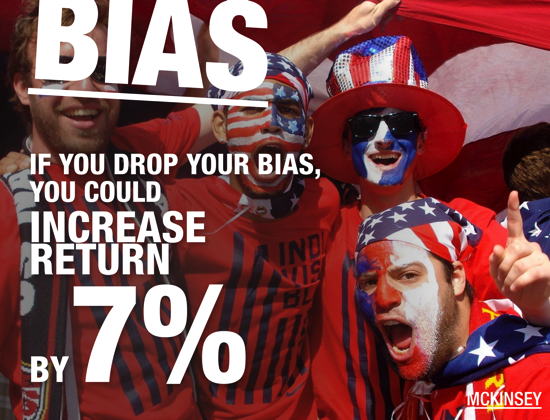Skift Take
Attention to details, attendee engagement, expectations management. There is consensus about the anatomy of outstanding events. What about when things go wrong? Are there bad event planning habits we can change to make our events successful? You betcha!
You should know by now, I despise the ‘you should do this’, ‘you should do that’ talk. I hate cheap advice.
Yet when I travel and speak around the globe, I meet a lot of extremely talented professionals who somehow keep doing things like, as Prince may say, it’s 1999.
Good Habits vs Bad Habits
We all agree there are goodevent planning habits and bad event planning habits.

Good habits are those you should hold on to. If you run every morning, you should keep doing that. It’s good for you. If you have the habit of sending a personal thank you note to your attendees, there is no reason to stop doing it.
Bad event planning habits, on the other hand, are those we should let go. They are no good for us. They have a strong ally in weak thinking and excuses, tons of excuses.
Sometimes we don’t even know why we have those habits. Maybe we’ve inherited from a colleague, a parent, a friend. Those little bastards play unconsciously with our ability to make smart decisions.
Bad event planning habits also mess with our perception of risk. We may keep doing something wrong just because we’ve been doing it forever. No need to change, right?
Bad Event Planning Habits and Event Planning
When planning events, we take shortcuts. That is completely normal. Events are very complex projects made up of incredibly granular details.
We have to take shortcuts. Experienced event professionals won’t start planning from scratch each time. They will have their templates, their contacts, their credo, their approach.
Alas shortcuts can be very risky and should be handled with care. We live in a fast evolving environment. The event industry is changing by the minute.
This is even more the case when it gets to technology. Tech shortcuts deeply affect the experience we deliver to our tech savvy attendees.
Just to give you the feel of this change, hashtags were a nerdy treat just 5 years ago, they are now extremely powerful communication tools for global mainstream campaigns. Ignoring hashtags because we are not used to them may jeopardise several engagement and marketing opportunties.
Let’s have a look at common bad habits impacting our event planning decision making.
Carrying Massive Paper Binders

Why event profs keep carrying gigantic paper binders is a mystery. Nobody understands why, but most keep doing it.
While this was acceptable in the early 2000s (and while this seems just few moments ago for most of us ageing :-), let me break the news to you: there is a nice tool on the market called tablet.
It is a cool device, it’s made of apps that help you plan all stages of your event. Calendar, Gantt, Team Collaboration, On site Ticket selling, you name it, there is an app for that.
That is why 2014 is strongly defined by the planning by app trend. It is time to free yourself from this heavy burden, save some paper and embrace the advantages that tablets bring.
Leaving Wifi to the Venue

Six years ago, if wifi was not working, it was acceptable.
Three years ago, attendees would start mentioning it on social networks.
If it happens today, you are effectively subtracting vital connectivity to most audiences. That is specially true in a conference, trade show or corporate meeting environment.
Reasons number one for crappy wifi is relying on venue. The amount of event planners who ask the venue if they have good wifi and then tick the box if they get a ‘yes’ is disheartening.
Do not take yes for an answer! I would suggest reading this excellent guide and ask the questions mentioned by Corbin Ball or to follow this excellent presentation by Randle Stonier.
Leaving Social Media To the AV Guys

The AV guys are traditionally seen as the geeks of the event. They are indeed, but they have a specific mission, they provide tech tools to make the content travel faster and in high resolution.
They are not in charge of content, marketing or customer satisfaction.
Yet there is a disturbing amount of colleagues leaving, for example, moderation of Twitter walls in the hands of extremely talented technicians who don’t have a clue about what is being discussed.
You and only you (or your direct staff) should control all social media channels selected for the event. Such a crucial activity cannot be delegated outside of your circle of trust and competence.
Checking In Guests With Print Outs

You know what’s funny about waiting in line to get into a medium sized conference? Nothing.
There is nothing enjoyable about waiting in line. Of course for some it is a fantastic opportunity to advance a couple of levels in Candy Crush, but truth is we want to get in, fast!
Searching through long lists of attendees on unreadable print outs does not work. And most of all, how do you coordinate check-ins when you have very long registration desks? Shouting names at each other like you are playing battleship.
Electronic Check in is a technology available to everyone. You can get it free or you can spend a premium and get fancy stuff like face recognition or social media integration.
Drop it!
Having Runners to Chase Attendees Who Want to Speak

Q&A is an awkward moment for everyone involved. It is awkward for the speaker, who is afraid of bad questions coming their way.
It is awful for attendees. With glossophobia (fear of public speaking) ranking number 1 fear, before things like dying, it is sure that Q&A are not an easy to manage moment.
What about mic runners? Those great guys chasing attendees raising hands at diametrically opposite sides of the room? Can we get them to do something more elaborate than chasing hands?
Find in this post, two fantastic alternatives to runners.
Getting Attendees to Fill in Evaluation Surveys

I recently attended a large exhibition for event professionals. After the show, I received an email to participate in an post-event evaluation questionnaire.
The day after I received another email to fill in the above questionnaire.
After a couple of days, guess what, I got another message urging me to fill in the form.
A week later I was sent the ‘final call’ to give them my precious feedback and fill in the damn thing.
You know, my dear reader, not only I did not fill in their precious questionnaire but I also substantially changed my opinion about the event after being abused with so many emails.
Attendees don’t fill in surveys, live with it. If you get a 0.5% response rate, you did awesome.
There are much better ways to collect feedback. Social media monitoring being a great example. If you keep an eye on social, chances are that you are not going to need any form submission whatsoever. You will know exactly what went wrong and what was awesome.
Opinions are not to be asked anymore, they are usually expressed publicly whether you like it or not.
Biased Tech Choices
Biases are like infectious diseases. You have to get rid of them.

Biases are the worst shortcuts we could take. Failing to analyse situations rationally could impact our decisions making. The thing is that when we choose based on bias, we think there is no effect.
A research from McKinsey, cited by the Harvard Business Review, quantified the loss of biased decision making in 7% of our ROI:
A recent McKinsey study of more than 1,000 major business investments showed that when organizations worked at reducing the effect of bias in their decision-making processes, they achieved returns up to seven percentage points higher.
You cannot afford to lose 7% because you are friend with someone who developed an app or because the salesperson was so convincing that you forgot to ask questions.
The Good Event Registration Guide and The Event App Bible are there to help you reduce your biases in two key event technologies such as online registration and event mobile apps.
Sending Endless Emails to Your Team

If I’d ask you to rank what makes a project successful, the most experienced of you would rate team collaboration as the top priority. While we all agree on this, we communicate with a tool that is not made for team collaboration.
A complex project like an event cannot be communicated via email. As simple as that.
When it gets to email abuse, I’ve seen it all. Emails with 30 or 40 people cc’d, crucial event information sent from personal accounts, 20 screen long threaded exchanges with dozens of participants.
Communication managed this way requires time to be managed. You are effectively managing the management tool. It sounds, and it is, silly.
Tools like BaseCamp or recently introduced Slack are immensely useful for team collaboration.
If we then look at how you communicate with your attendees, large events cannot do without customer satisfaction management tools such as Zendesk or the amazing HelpScout.
Never scream in the office ‘did you reply to that email?’ again.
You Print Your Guide

Really? I do not accept the concept that we need print event guides. Enormous blocks of wasted paper with ads and articles hardly anyone reads.
You know what we value in the event guides? The programme and the map.
No wonder why these are the top requirements for event mobile apps. In fact mobile apps have replaced event guides.
Apps cost from $0 to $20,000, you can achieve a lot with them. I am not sure what you are achieving with print guides other than contributing to waste and deforestation.
I would not accept the criticism that attendees do not have a mobile phone to see the guide. I am sure your 75 year old mother in law is posting pics to Facebook, so no real discussion here.
Sourcing Speakers/Performers Like Sourcing Centrepieces

Finding great centrepieces for your guests’ tables is not so difficult. You go to your favourite supplier, you ask them what is cool right now, you match the centrepiece with the overall decor, style, colour pattern and voila’, you have a decision.
You cannot treat performers like centrepieces. You cannot simply ask ‘who is hot right now’ and get Mugatu style replies.

Sourcing performers means understanding the education or entertainment needs of your guests. It means researching whether these performers may deliver actual value to your audience.
When it gets to speakers, it involves searching for videos of them speaking, analysing their Slideshare profiles to check how they deliver presentations and whether they get engagements, likes and clicks.
In some instances you need crowd magnets, specially if you work with music and festivals, but in the world of meetings, conferences, corporate the big name will only mean big budget.
See this for more reference.
Do Not Measure Anything

I remember having this conversation with this event consultant who developed a fantastic method to run better meetings. They created a whole dashboard to analyse and measure the quality of an event.
A very complex framework requiring a six figure investment. At the end of the process the event was given an incredibly detailed report about performance and recommendations. He mentioned that most of the event professionals he worked with, never read it.
Sometimes we spend money on expensive tools just for our ease of mind. Just to show off to our boss, or worse to ourselves, that we did the job.
When the hype of the event is gone, we forget to look at the results of our precious investments. In fact we are probably ignorant of what report we can obtain from that super cool social media dashboard, monitoring tool or marketing platform.
If you don’t measure it, it doesn’t exist. ‘Guests were happy’ is not an acceptable KPI.
Leaving Networking to Happen by Itself

How many times you’ve read on a conference program, at the very bottom of the sessions, ‘Drinks – Networking’. I have seen it countless times.
We often leave the most likely #1 reason why people attend conferences to the very end of the event and we delegate to alcohol the role of making introductions. This is lame.
Event professionals need to realise the value of networking and using all their creativity to find better solutions for networking (hint: badges are not a solution).
Most event mobile apps have discovery features allowing attendees to meet their networking match. Working with better education concepts that stimulate horizontal interaction is also a prime factor.
It is never only a question of solving everything with technology. Dropping shortcuts is what I am requiring you to do!
In Conclusion
There is no reason to keep doing things the way we used to if results harm the success of our events. Thinking critically over what we are trying to do helps to get rid of bad habits.
Shortcuts can sometimes save us a lot of time. Some other times they just jeopardise the success of our carefully planned project.
The key is to realise that there is no right or wrong, there are good and bad decisions and your ability to evaluate situations rationally will make a difference.
Now go and surprise us with an incredibly new experience!





